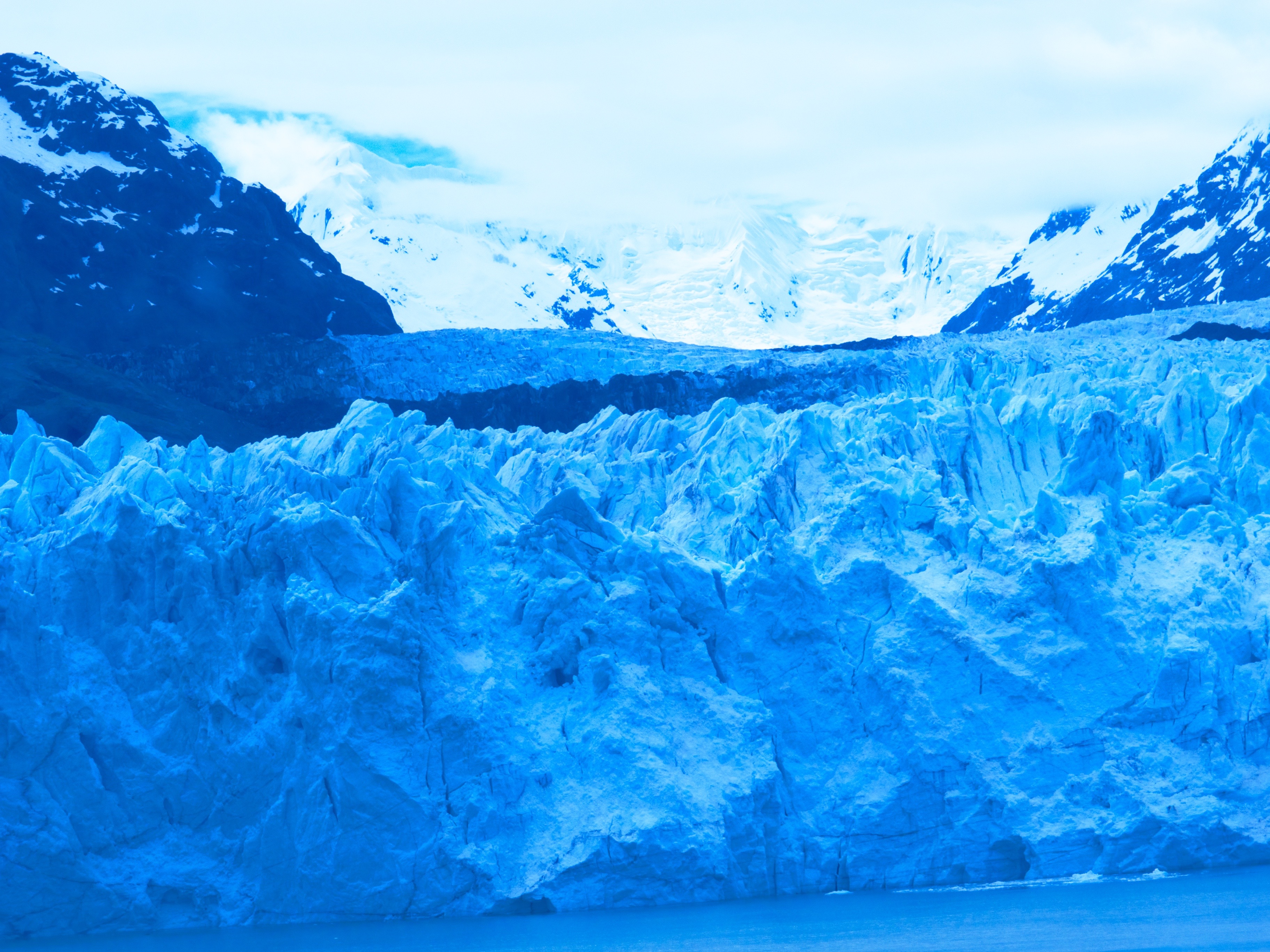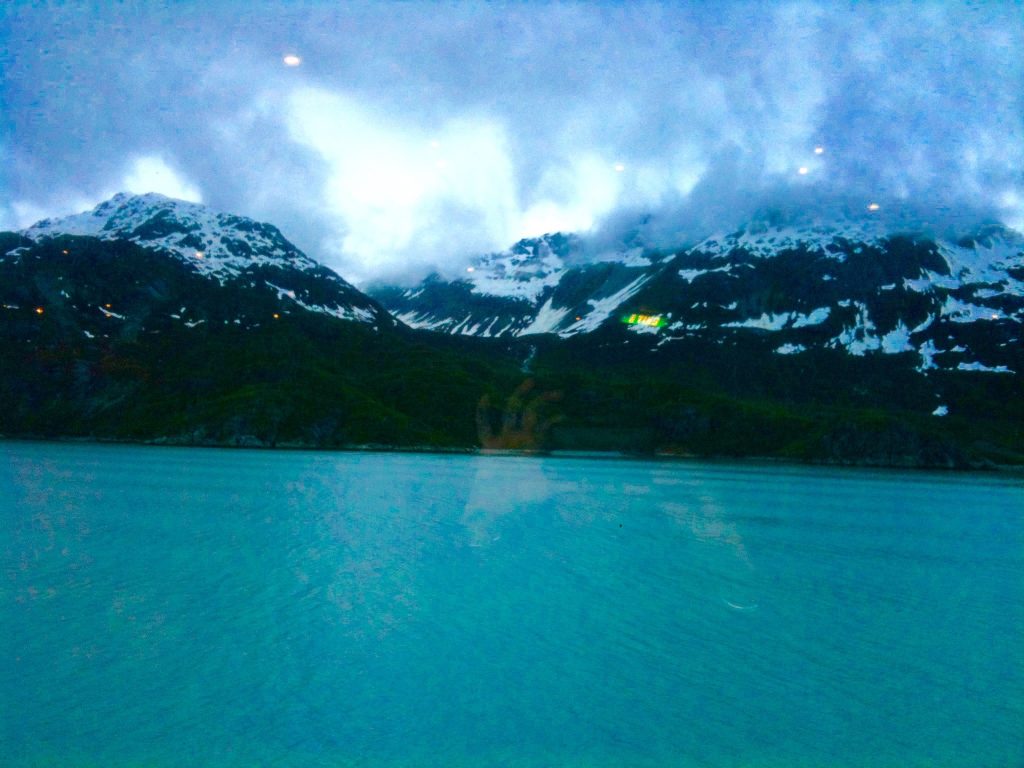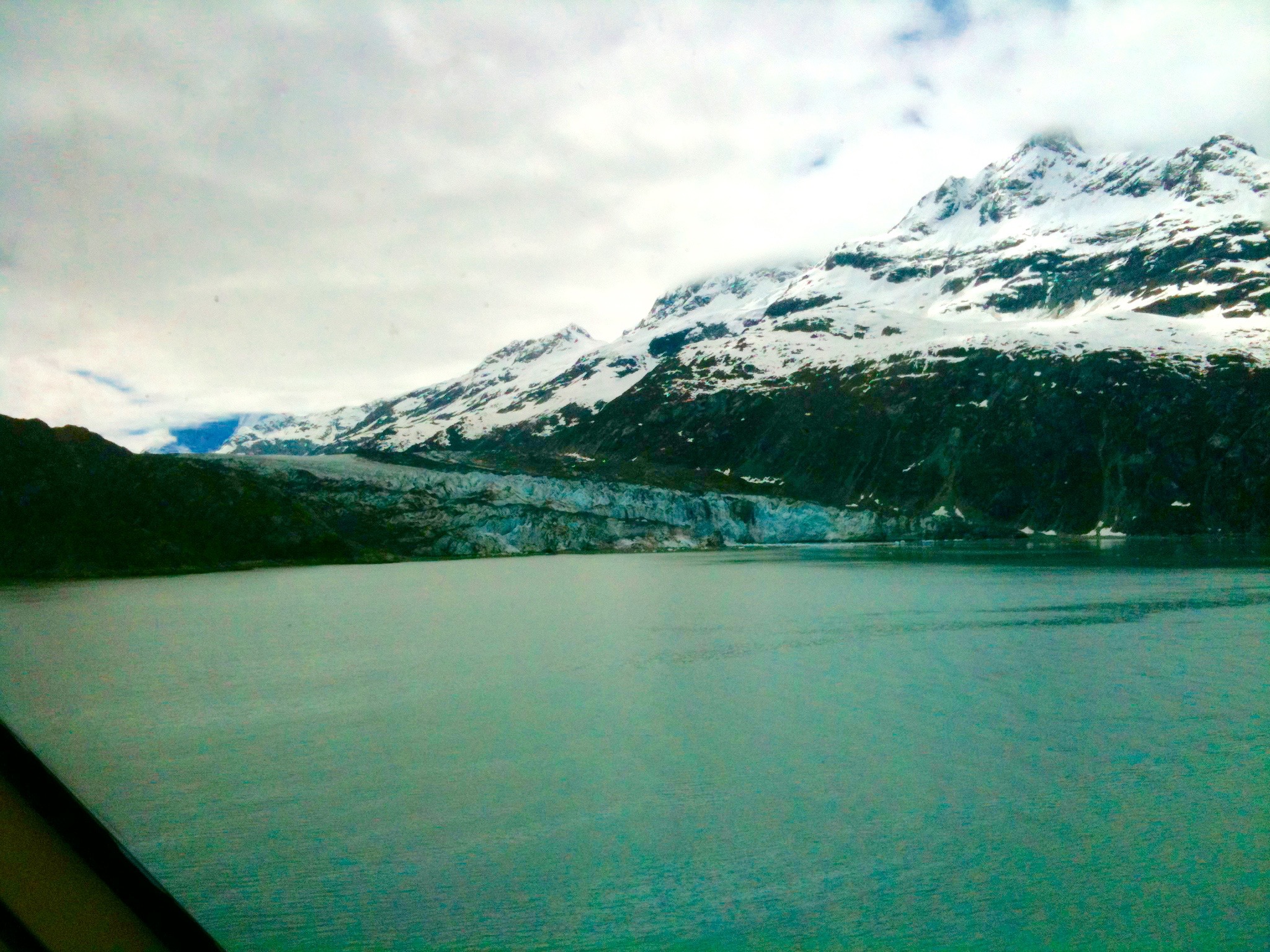“The mountains are calling and I must go.” ~ John Muir
Glacier Bay National Park was one of the highlights of our Alaska visit. It’s designated a World Heritage Site. We were able to see tidewater glaciers, get close up to inlets carved by the ice, and just bask in the silence and the peace of this wilderness experience. It’s easy to become camera-happy here and take the same or similar views over and over again.


We did not see another cruise ship while we were there. Besides a smaller boat, it seemed like we had the place to ourselves. It was an exciting day that we and our fellow cruisers had looked forward to. Glacier Bay Park Rangers came onboard the ship early in the morning. At 9:15 a.m. there was a talk by one of the rangers “Encounter: The Wonders of Glacier Bay.” It was a heartfelt and inspiring presentation about his journey to loving nature and becoming a Ranger at Glacier Bay. He asked us to think about what “wilderness” meant to us as we cruised through the park.
At 10:00 a.m., there was another talk presented by the Native Voices of Glacier Bay called “Encounter: Alaska Native Culture.” This was very well presented and told more about the Huna Tlingit people and their relationship to Glacier Bay. “But for the Huna Tlingit, Glacier Bay is a place not just of new discoveries, but of reconnection with the lifeways, knowledge, and ancestors of the past. It is a land that sustained them with a rich abundance of fish, wildlife, and plants, but more importantly a place that continues to sustain them through stories, songs, dances, and ongoing traditional practices. Although most Huna Tlingit today live across Icy Strait in the modern village of Hoonah, Glacier Bay remains their spiritual homeland. Their ancient stories and place names speak eloquently of the history of their beloved bay.” (nps.gov)
The Huna Tlingit people are a very proud people and everything that I heard and experienced about them and their culture throughout our Glacier Bay day reinforced this.
We were very fortunate to have a group of Huna Tlingit dancers perform for us before we left Haines, Alaska (the stop after Glacier Bay). Music and dance is a very important part of all cultures and no less in theirs. From very young children to their senior folk, they were happy to share this part of their culture with us. It was a wonderful experience.
At 10:45 a.m. a scenic commentary was provided by one of the Glacier Bay Park Rangers pointing out the sights and giving information along the way. This went on throughout the rest of the day as we cruised through Glacier Bay. We arrived at Margerie Glacier at around noon, at Jaw Point around 1:45 p.m. and Lamplugh Glacier at about 2:45 p.m. I spent some time on the enclosed observation area and later on wandered out on the open deck area. It was an awesome experience to be present with the glaciers and the beauty of nature. This was the closest I’ve ever come to being in the wilderness.
“The Wilderness of Glacier Bay National Park is forged from dynamic change in the wake of powerful seismic forces and dramatic glacial movements. Glaciers have sculpted this landscape, from the sharp brows of its mountain peaks to the deep troughs of its fjords. Even the land itself is rising as the colossal weight of the ice eases off of it. Here, it is almost as if the span of time has been condensed and then neatly unfurled across this landscape. It is a place renowned and protected for its diversity, constant change, and opportunity for study.” (wilderness.net)
I didn’t expect to learn so much about the Huna Tlingit or about glaciers as I did on this trip. I’m sure that for everyone it was a wonderful experience overall and one in which they learned a lot. The personnel on the ship and the park rangers organized this day to be a memorable one for those of us who made this journey.
Some of the last pictures that I will add to this post were taken from the inside observation area of the ship. You will notice light there coming from lamps on various tables close by. Hope you enjoy the photos anyways.
I did say there was a lot of learning taking place on the Alaska trip and it hasn’t stopped yet. Here are some interesting facts about Glacier Bay National Park from sites.google.com
Interesting Facts
|
A. Interesting Facts Glacier Bay National Park and Preserve is located in Alaska on the Pacific coast. In the northwest, the park borders on the Gulf of Alaska. In the south, the Icy Strait and Cross Sound surround the park. To the East is the Canadian province of British Columbia. · The park is bigger than the state of Connecticut, but it contains less than one percent of Alaska’s land mass. · The Alaska-Canada border crosses right through the tallest peak in the park at the top of Mount Fairweather. · Glacier Bay is the largest protected marine sanctuary in the world. · Glacier Bay tides can change as much as 25 feet from high to low tide. · During the Pleistocene era—the Great Ice Age—a 5000 foot thick sheet of ice covered the area of southern Alaska. · The most recent advance of the ice sheet occurred between 500 and 200 years ago. · Glacial ice acts like a prism when sunlight hit it, and separating the light by its wave length. The tightly packed crystals under the surface of glaciers often appear blue. · The ice in parts of Glacier Bay National Park is so thick and heavy it has pushed the earth’s crust deeper into the mantle. As the ice melts, parts of the earth in this area rise more than 1 inch per year. · Glacier Bay National Park has the only glacier in the continental US that flows directly into the Pacific Ocean. · The glacial ice breaking off and “calving” into Glacier Bay is on average 200 years old. · Since they were first discovered in 1796, the glaciers in Glacier Bay National Park are retreating faster than anywhere in the world. |
I would love to return to Alaska some other time. As a lover of Nature and places that are “unspoilt,” this trip was the closest I ever came to having a wilderness experience. According to John Muir, the well-known naturalist,“To the lover of wilderness, Alaska is one of the most wonderful countries in the world.” I couldn’t agree more.











